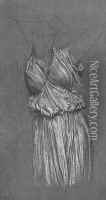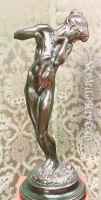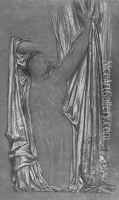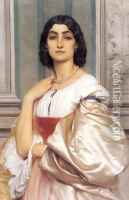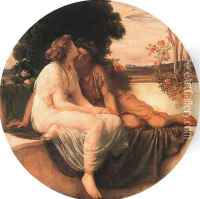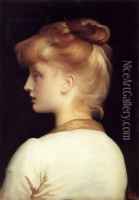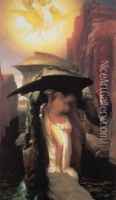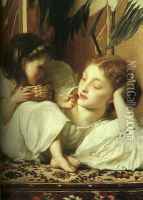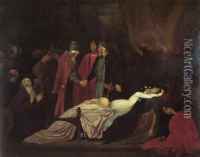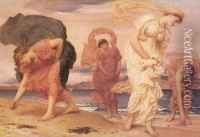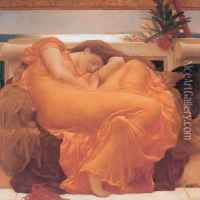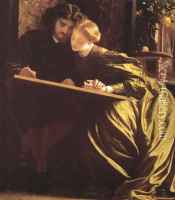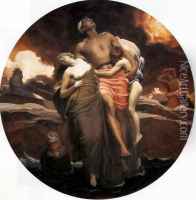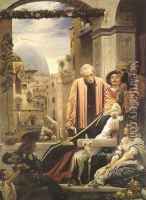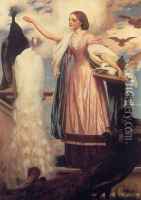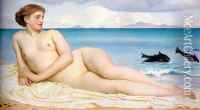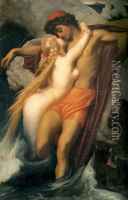Lord Frederick Leighton Paintings
Lord Frederick Leighton was a renowned British painter and sculptor associated with the Victorian era Neoclassicism and the Pre-Raphaelite Brotherhood. Born on December 3, 1830, in Scarborough, North Yorkshire, Leighton was the son of a medical doctor and received a well-rounded education that included extensive travels across Europe during his childhood. These early experiences exposed him to classical art and culture, which later greatly influenced his artistic style.
Leighton's formal art education began in Frankfurt, Germany, under the tutelage of Edward von Steinle. He continued his studies in Rome, where he was inspired by the works of the Old Masters and contemporary Italian painters. In 1855, Leighton moved to Paris, where he was influenced by the French Neoclassical artists such as Ingres and Delacroix. His work during this period began to reflect a combination of classical subject matter with a romantic and sometimes dramatic presentation.
In 1859, Leighton settled in London and soon became a central figure in the British art scene. His painting 'Cimabue's Celebrated Madonna' was bought by Queen Victoria herself, which catapulted him to fame. Leighton's works are characterized by their academic precision, fine draftsmanship, and a rich palette. He became well-known for his classical and historical subject matter, often featuring strong, beautiful figures set in idyllic and exotic landscapes.
Leighton was an active member of the Royal Academy and became its president in 1878. As president, he played a significant role in the education and promotion of young artists as well as in the establishment of the Royal College of Art. In 1878, Queen Victoria ennobled him as a baronet, and in 1896, he became the only British artist to be given the title of Baron, becoming Lord Leighton of Stretton.
Throughout his career, Leighton remained unmarried and dedicated to his art. He was a mentor and friend to many artists of his time, including the famous Pre-Raphaelites. His home in Holland Park, London, known as the Leighton House Museum, is now a museum dedicated to his life and work.
Lord Frederick Leighton passed away on January 25, 1896, just one day after his ennoblement was announced. Despite the fading popularity of his style following his death, his work has seen a resurgence in interest and is celebrated for its beauty, technical skill, and historical value. Leighton's legacy as one of the foremost artists of the Victorian era continues to be recognized to this day.
